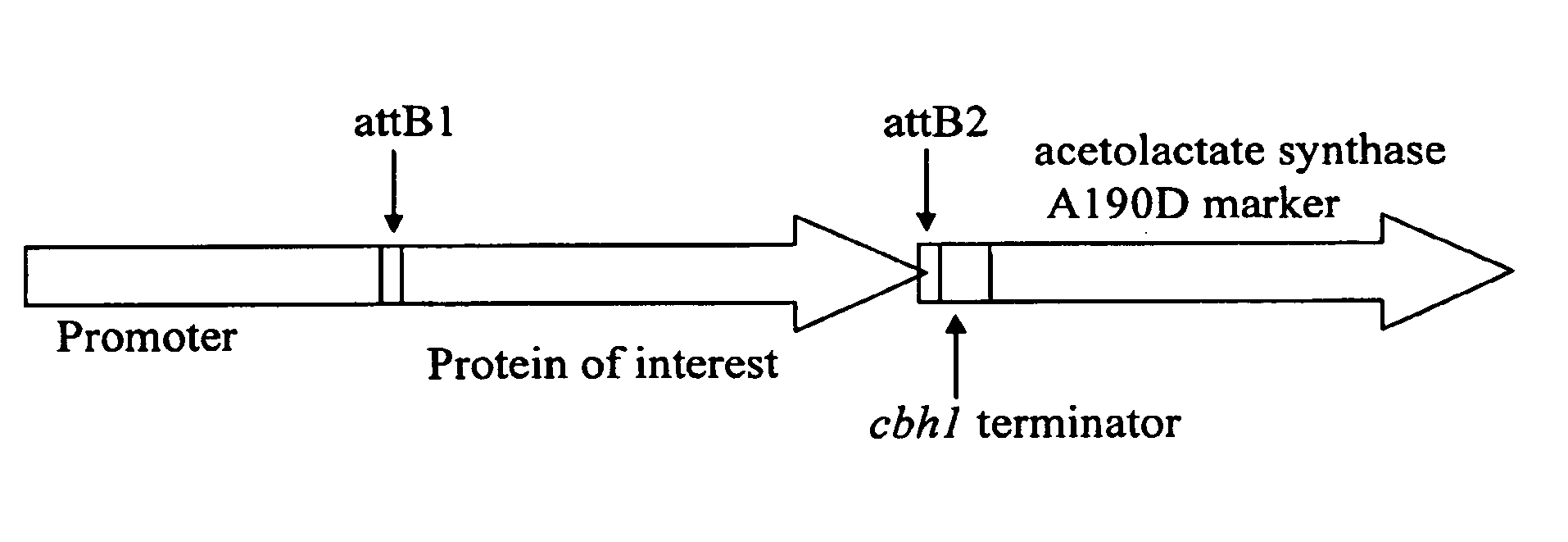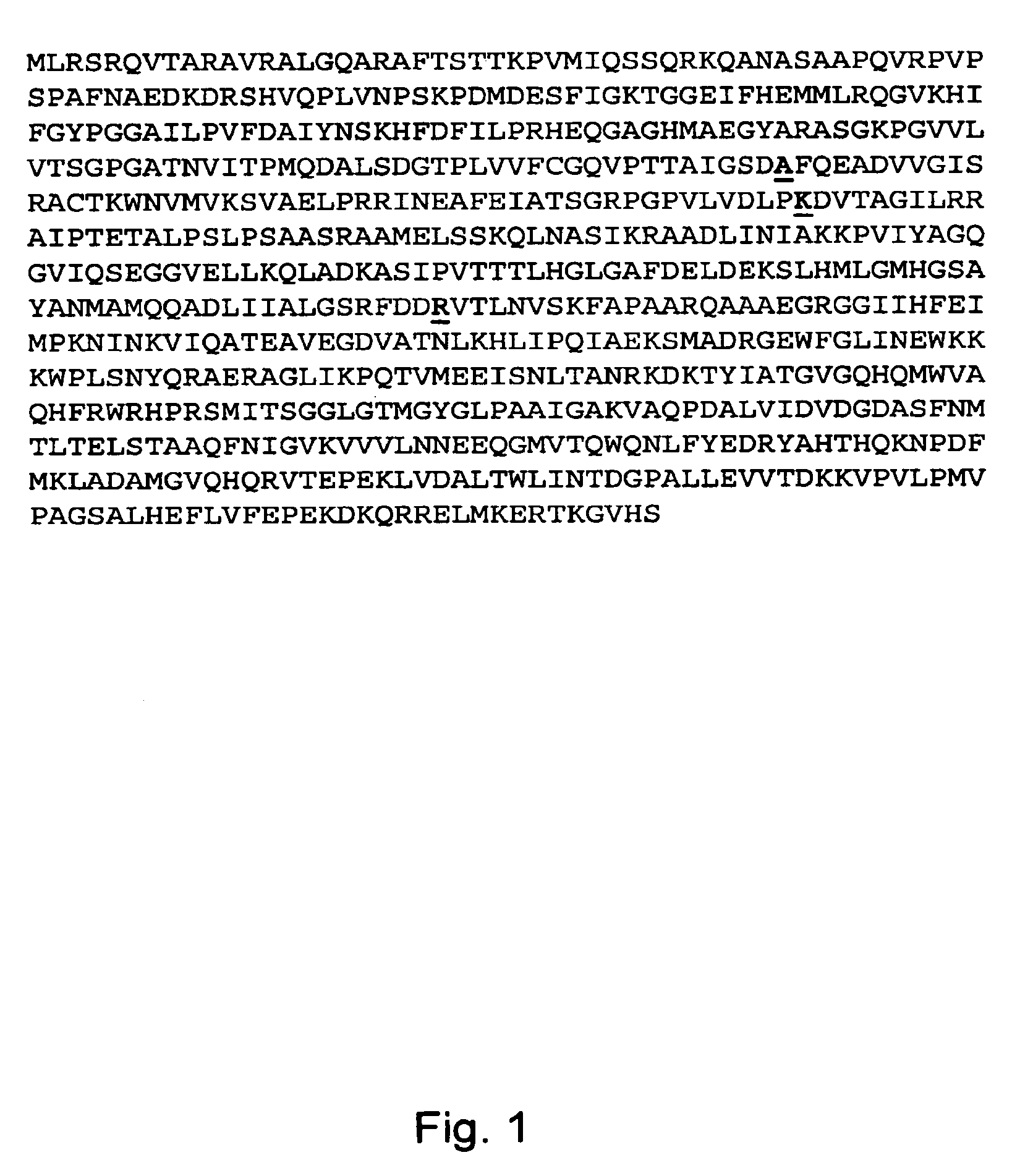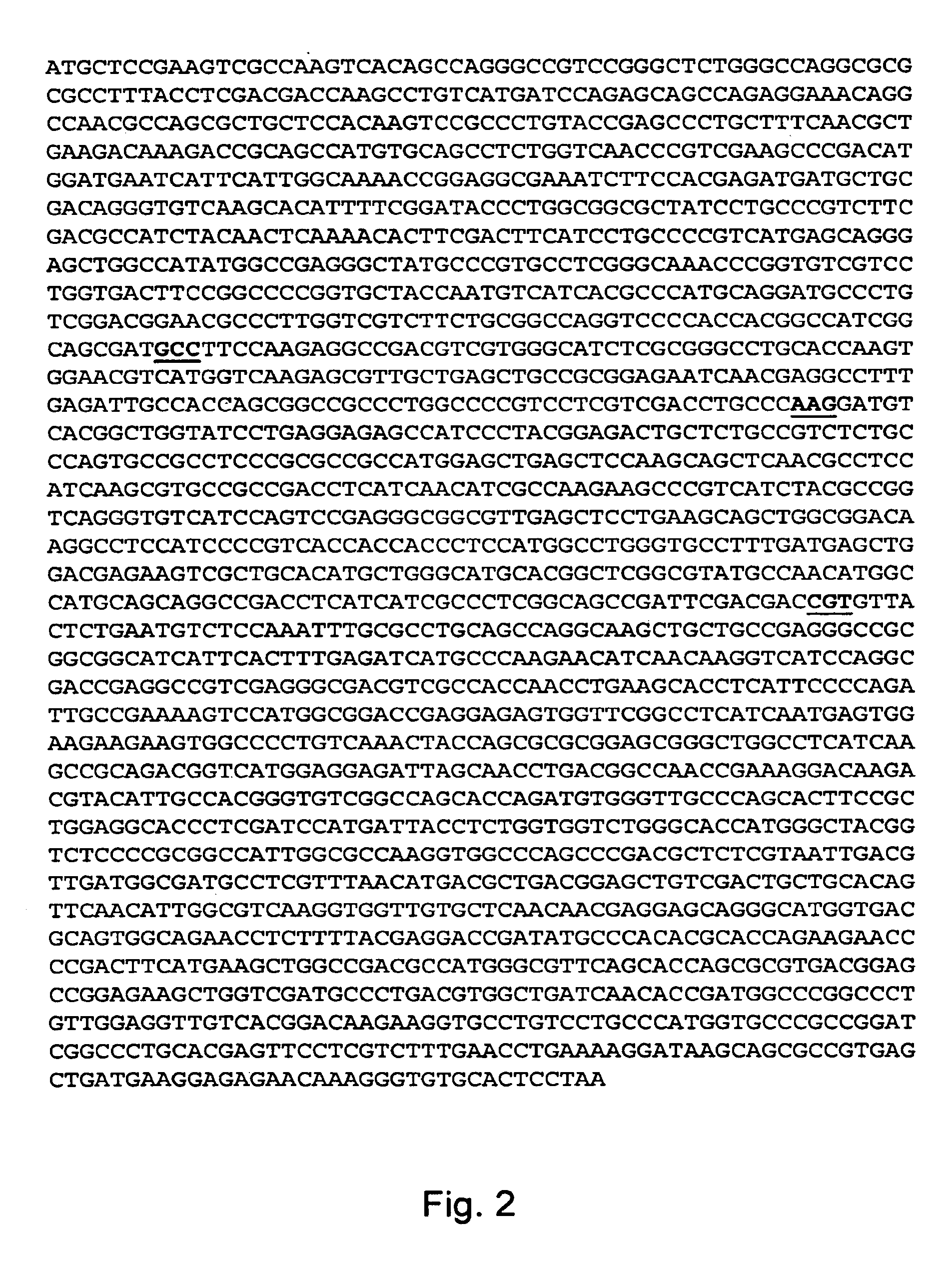Acetolactate synthase (ALS) selectable marker from Trichoderma reesei
a technology of acetolactate and selectable markers, which is applied in the field of acetolactate synthase enzymes, can solve the problems of toxic compounds being used to kill
- Summary
- Abstract
- Description
- Claims
- Application Information
AI Technical Summary
Benefits of technology
Problems solved by technology
Method used
Image
Examples
example 1
Isolation of ALS Genes from Chlorimuron Ethyl-Resistant Cells
[0105]Chlorimuron ethyl (Chem Service Inc., West Chester, Pa.), freshly prepared and dissolved in DMF to a concentration of 20 mg / ml, was added at various concentrations to molten Vogels agar immediately prior to pouring the plates to produce media containing 25, 50, 100, 200, 300, 400 or 500 ppm chlorimuron ethyl.
[0106]Approximately 25 million spores T. reesei strain QM6a (ATCC 13631) were plated onto each plate. After 10 days of growth at 28° C., five colonies were isolated, two from 50 ppm plates and one each from each of the 25, 200 and 300 ppm plates. The colonies were further isolated by restreaking them onto fresh Vogels agar plates containing 200 ppm chlorimuron ethyl.
[0107]Genomic DNA was prepared from each of the five chlorimuron ethyl resistant strains in order to amplify and sequence the acetolactate synthase (als) gene from those strains. Herculase DNA polymerase (Stratagene, La Jolla, Calif.) was used for amp...
example 2
Transformation of T. reesei with A190D Acetolactate Synthase Gene
[0114]The vector pTrex-glucoamylase was created to express a glucoamylase derived from Trichoderma reesei in T. reesei. FIG. 4 depicts a general diagram of the vector. Three different vector constructs have been made with different promoters; 1818A, 1818B and the T. reesei cbh1 promoter. FIG. 5A illustrates the sequences of the promoter designated 1818A and FIG. 5B illustrates the sequences of the promoter 1818B.
[0115]The entire nucleotide sequence of the pTrex-glucoamylase including the cbh1 promoter is shown in FIG. 6. The pTrex-glucoamylase vector is based on vector pTrex3g as described in detail in WO 05 / 001036. In brief, the pTrex3g is based on the E. coli vector pSL1180 (Pharmacia, Inc., Piscataway, N.J.) which is a pUC118 phagemid based vector with an extended multiple cloning site containing 64 hexamer restriction enzyme recognition sequences. It was designed as a Gateway destination vector (Hartley, J. L. et a...
example 3
Sequencing and Cloning of the 1818A and 1818B Promoters
[0123]The 1818A and 1818B promoters (as shown in FIGS. 5A and 5B, respectively) were identified by mining the US Department of Energy Joint Genome Institute's Trichoderma reesei genome sequence database (as found at the world wide website of jgi.doe.gov) for sequences upstream of highly represented ESTs.
[0124]The promoters were amplified by PCR and cloned behind a glucoamylase coding sequence in accordance with the vector map shown in FIG. 8. The entire nucleotide sequence of this construct is shown in FIG. 9. The vector used is based on the vector pTrex3g, which is described in detail in Example 6 of WO 05 / 001036. In brief, the pTrex3g is based on the E. coli vector pSL1180 (Pharmacia, Inc., Piscataway, N.J.) which is a pUC118 phagemid based vector with an extended multiple cloning site containing 64 hexamer restriction enzyme recognition sequences. It was designed as a Gateway destination vector (Hartley, J. L. et al., (2000) ...
PUM
| Property | Measurement | Unit |
|---|---|---|
| pH | aaaaa | aaaaa |
| pH | aaaaa | aaaaa |
| time | aaaaa | aaaaa |
Abstract
Description
Claims
Application Information
 Login to View More
Login to View More - R&D
- Intellectual Property
- Life Sciences
- Materials
- Tech Scout
- Unparalleled Data Quality
- Higher Quality Content
- 60% Fewer Hallucinations
Browse by: Latest US Patents, China's latest patents, Technical Efficacy Thesaurus, Application Domain, Technology Topic, Popular Technical Reports.
© 2025 PatSnap. All rights reserved.Legal|Privacy policy|Modern Slavery Act Transparency Statement|Sitemap|About US| Contact US: help@patsnap.com



